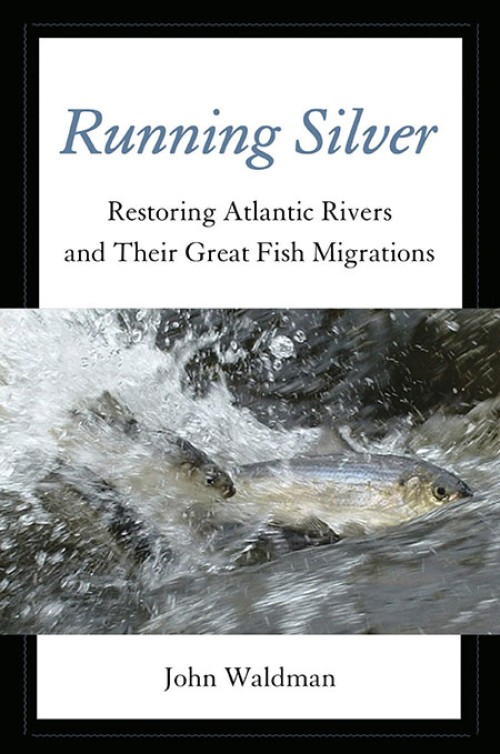by John Waldman
Lyons Press, 2013
Sea-run fish are often overlooked in modern life, as fewer and fewer people touch or even see the many species that once clogged Atlantic seaboard rivers. While the general modern disconnect from all things wild contributes to this, in this specific instance it’s mostly because runs are now either vanished or threadbare, creating cultural voids where rich seasonal rites once flourished.
Running Silver: Restoring Atlantic Rivers and Their Great Fish Migrations is John Waldman’s compelling – and frothy – effort to raise awareness of the plight of these fish species. While the book covers rivers from Nova Scotia through Florida, Northeastern watersheds receive much attention. And river conservation shares enough with forestry concerns to make this intriguing subject matter for Northern Woodlands readers, particularly the lengthy discussion detailing approaches to modern river stewardship, which mirror current forest management debates.
Citing marine biologist Daniel Pauly’s “shifting baselines syndrome,” which holds that small, gradual changes are often overlooked, Waldman’s chief anxiety is that as diadromous fish (those that migrate between the sea and fresh water) no longer run in harvestable numbers, both their cultural and ecological import will be forgotten. As populations slowly dwindle, each human generation will think the numbers that it grew up with are normal. “In effect,” Waldman writes, “Pauly describes a ratchet, or a slippery slope where, after a while, you can’t see the hilltop; later, not even much of the grade above you. And perhaps you even stop caring.”
Waldman’s fears are not unwarranted. The cultural bonanza of New England and Hudson Valley fish runs, after all, are now largely the province of museums. These fears have woodland precedents, too, for though the chestnut and elm still have impassioned aficionados striving to restore them, working elm wood or gathering chestnuts are traditions lost to living memory, and without that palpable experience, even many people deeply smitten with forests have lost interest.
Daunted but not defeated, Waldman works hard to point out that when it comes to fish, this circle is not yet closed, and that with the likely exception of Atlantic salmon there is still time to refurbish both rivers and mindsets in such a way that the fish can return. Dams are his chief bugaboo, and chapters here provide the book’s greatest hope. Many of New England’s near countless dams no longer serve a function, and those who would like to remove them in an effort to restore long moribund spawning grounds are meeting less and less public resistance. Connecticut has done much here, and Waldman spends a great deal of time with Steve Gephard and Laura Wildman, the two prime movers of the state’s many promising removals.
The news, of course, is far from all positive. Though certain localized runs have rebounded, readers will recoil when they learn how dramatic each species’ decline has been over time. Eels, for instance, are by some estimates down to one percent of historical peaks, and descriptions of the Connecticut River’s tattered shad population elicit great pathos. Waldman points out that concerns over diminished fish runs date back to the first dams, and that the current state of diadromous fish has been the result of people choosing to use rivers for purposes detrimental to those species, much as we once chose to raze forests for agriculture. The time, he hopes, has come to make different choices that will re-establish the fish and the culture that grew up around them.


